
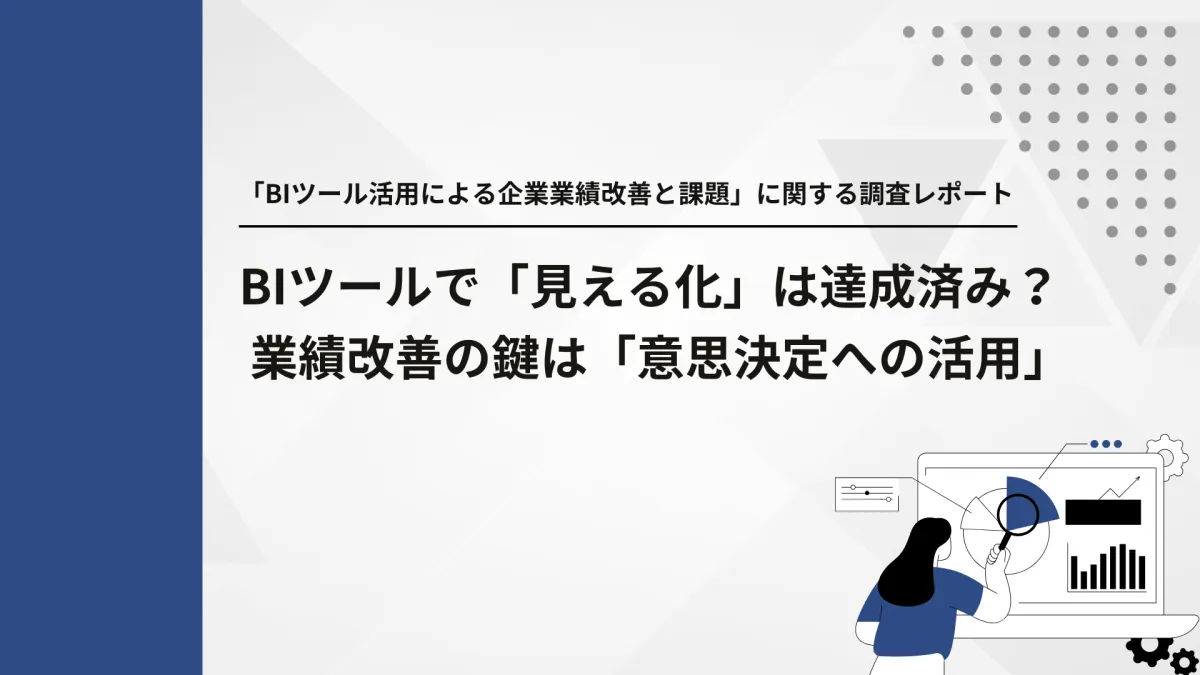
Unlocking Business Intelligence: A Study on Effective BI Tool Utilization
Unlocking Business Intelligence: A Study on Effective BI Tool Utilization
In a rapidly changing market, businesses are increasingly required to make swift and accurate decisions. This shift towards data-driven management has necessitated the implementation of Business Intelligence (BI) tools, which allow companies to visualize, analyze, and share operational data. Keywalker Corporation, based in Minato-ku, Tokyo, conducted a survey targeting company executives who have adopted BI tools to examine how effective these tools are in improving business performance and the challenges associated with their use.
Survey Overview
The study titled “Improving Business Performance through BI Tool Utilization: Current Challenges” was conducted from March 18 to 20, 2025, targeting 1,003 executives from companies utilizing BI tools. The survey aimed to gather insights into their primary reasons for adopting these tools and the effectiveness they have experienced in achieving their business objectives.
Download the full white paper here!
Objective of Introduction
When asked about the main objectives for adopting BI tools, executives reported the following percentages: 58.7% aimed for operational efficiency, 44.1% sought revenue and profit enhancement, and 43.5% focused on cost reduction. These objectives reflect a desire for measurable outcomes, emphasizing that the deployment of BI tools is not merely a step toward digitization but a strategic initiative aimed at maximizing managerial effectiveness.
Primary Applications of BI Tools
The survey also examined the key areas where BI tools are predominantly utilized. It was found that 46.3% employ them for analyzing sales activities, 41.9% for measuring the effectiveness of marketing campaigns, and 39.8% for financial and accounting analysis. This suggests that BI applications are strongest in areas where outcomes can be easily quantified and visualized. Conversely, applications in human resources, supply chain management, and strategic planning remain limited, indicating room for future expansion in these strategic domains.
Key Features Used
Regarding the functionality employed within their BI tools, 55.9% of respondents highlighted the importance of data visualization, followed by 41.7% for data integration with other systems and 41.6% for data import/export functions. The emphasis appears to be on organizing and making data visible. However, advanced capabilities such as predictive analytics using AI and machine learning were only utilized by 26.3%, suggesting that companies face a challenge in harnessing more sophisticated functions moving forward.
Perceived Benefits of BI Tool Usage
When investigating the effectiveness of BI tools, more than 70% of respondents noted experiencing some form of benefit. Notably, 75.3% reported improvements in operational efficiency, 75.5% noted increases in sales, and 75.7% highlighted cost reductions directly aligning with the intended goals of BI tool implementations. Nonetheless, about 20-30% felt they had not realized the expected benefits, indicating variability in the effectiveness experienced across different companies.
Challenges in Maximizing BI Tool Potential
Despite the strengths of BI tools, challenges remain. About 33.8% of participants indicated that they find it difficult to incorporate analysis results into strategic management decisions. Further, 31.7% noted the complexity of operations, and 30.1% reported a lack of data sharing and communication across departments. While positive evaluations of functionalities exist, the hurdles in interpreting data and effectively using it in organizational decision-making processes are apparent.
Support Structures Needed
When queried about the support necessary to enhance BI tool utilization, respondents overwhelmingly emphasized the need for continuous training programs and workshops (58.0%), support from specialized personnel (42.7%), and comprehensive operating manuals and guidelines (34.0%). These findings suggest that, despite existing frameworks, there remains a gap in effectively applying these tools within daily operations.
The Future Directions of BI Tool Utilization
Looking ahead, executives indicated that they primarily seek to strengthen operational efficiency (46.8%), promote cost reductions (44.2%), and further increase sales (35.7%). This suggests an ongoing focus on immediate business improvements while also reflecting interest in discovering new business opportunities and making quicker management decisions.
Conclusion
The survey conclusively shows that organizations implementing BI tools experience tangible benefits in terms of operational efficiency, revenue growth, and cost reduction. However, challenges persist regarding the practical integration of analytical insights into the decision-making process. Businesses need a robust support system, not just in software functionality but also in human resources, training, and interdepartmental coordination, to harness the full potential of BI tools.
For further exploration of BI tools and their impact, Keywalker offers comprehensive solutions, notably their Tableau solutions, which facilitate data visualization and decision-making processes effectively.
Discover how Keywalker can assist in transforming your data: Tableau Solutions.

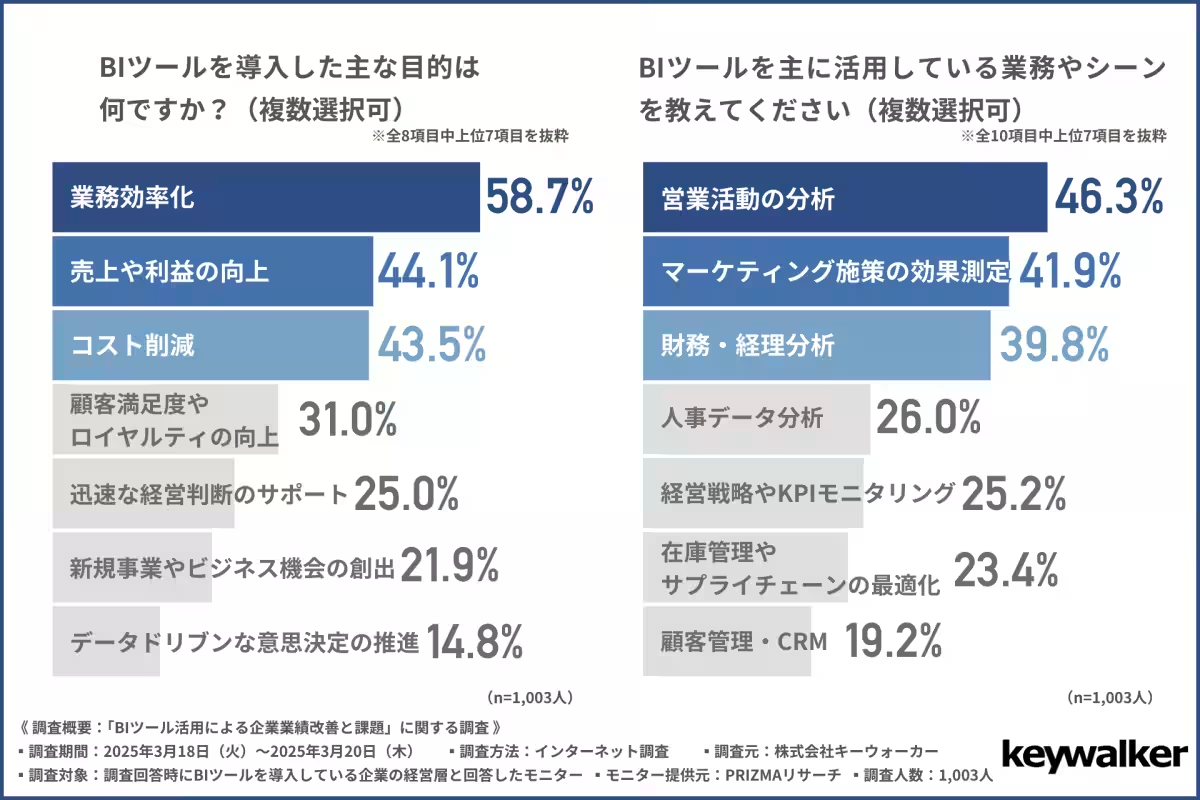
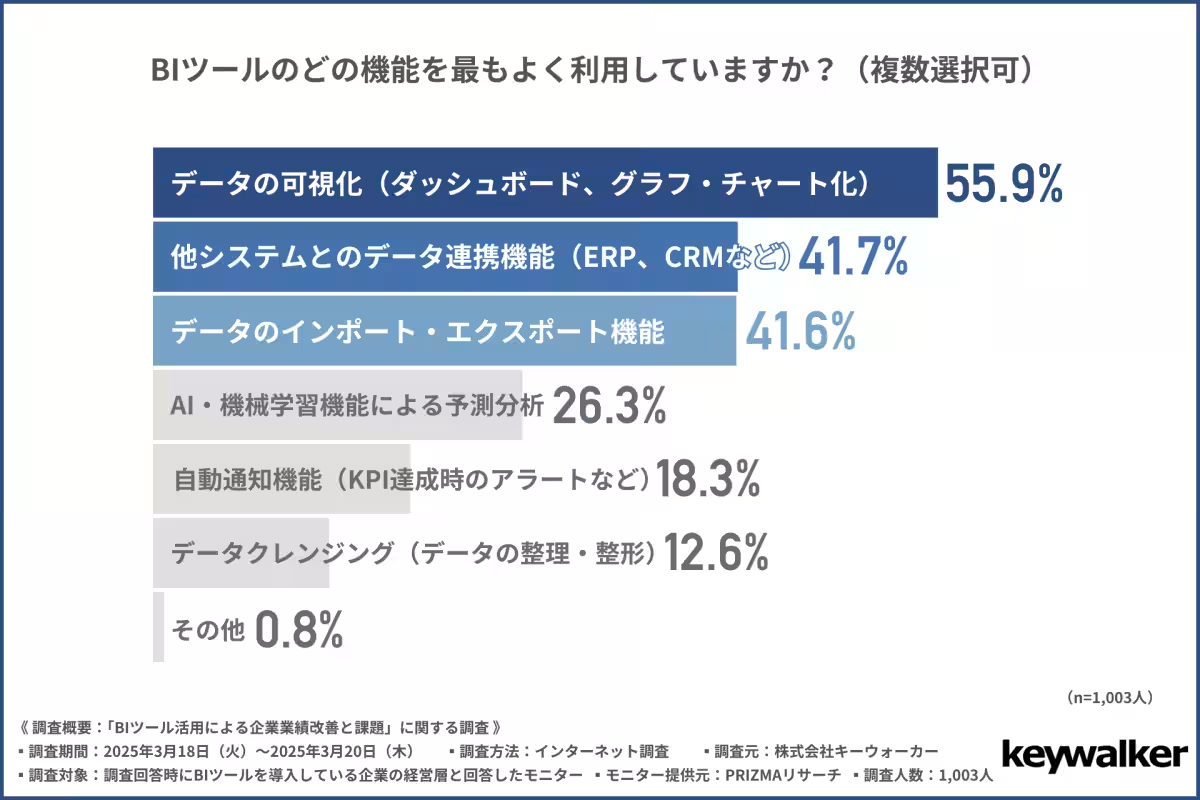
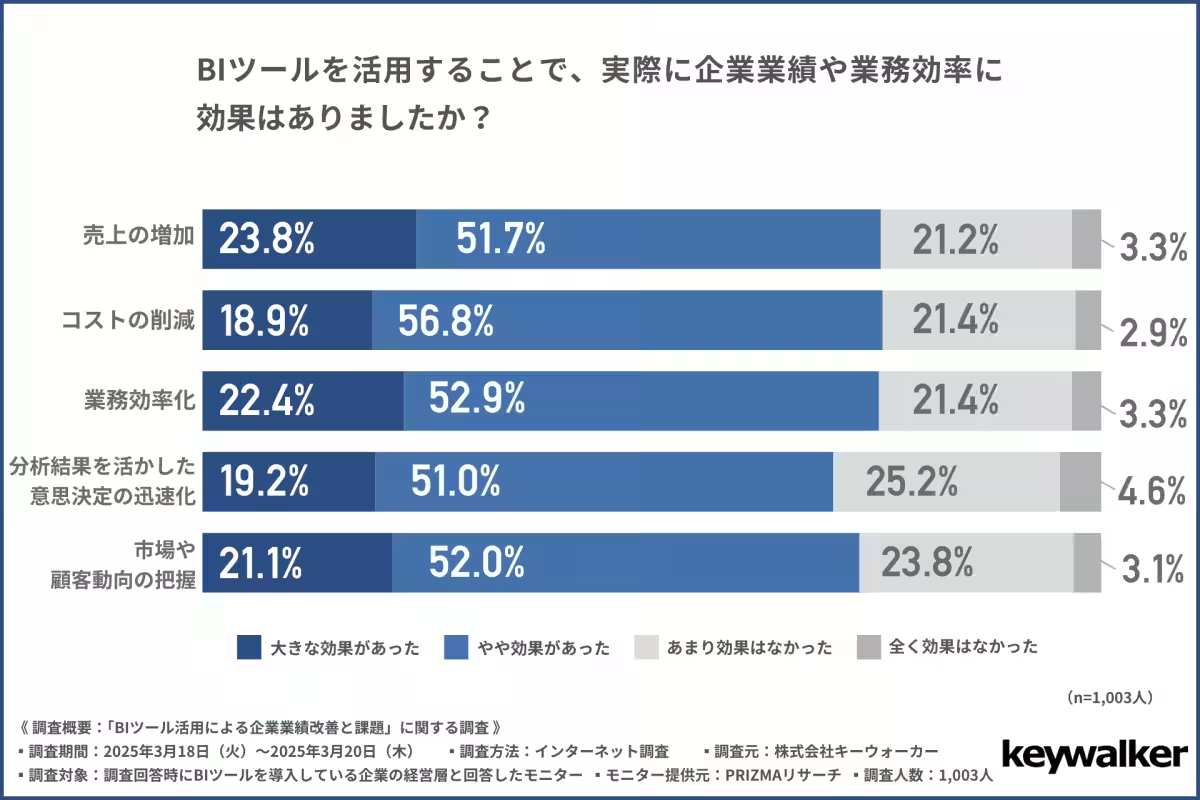
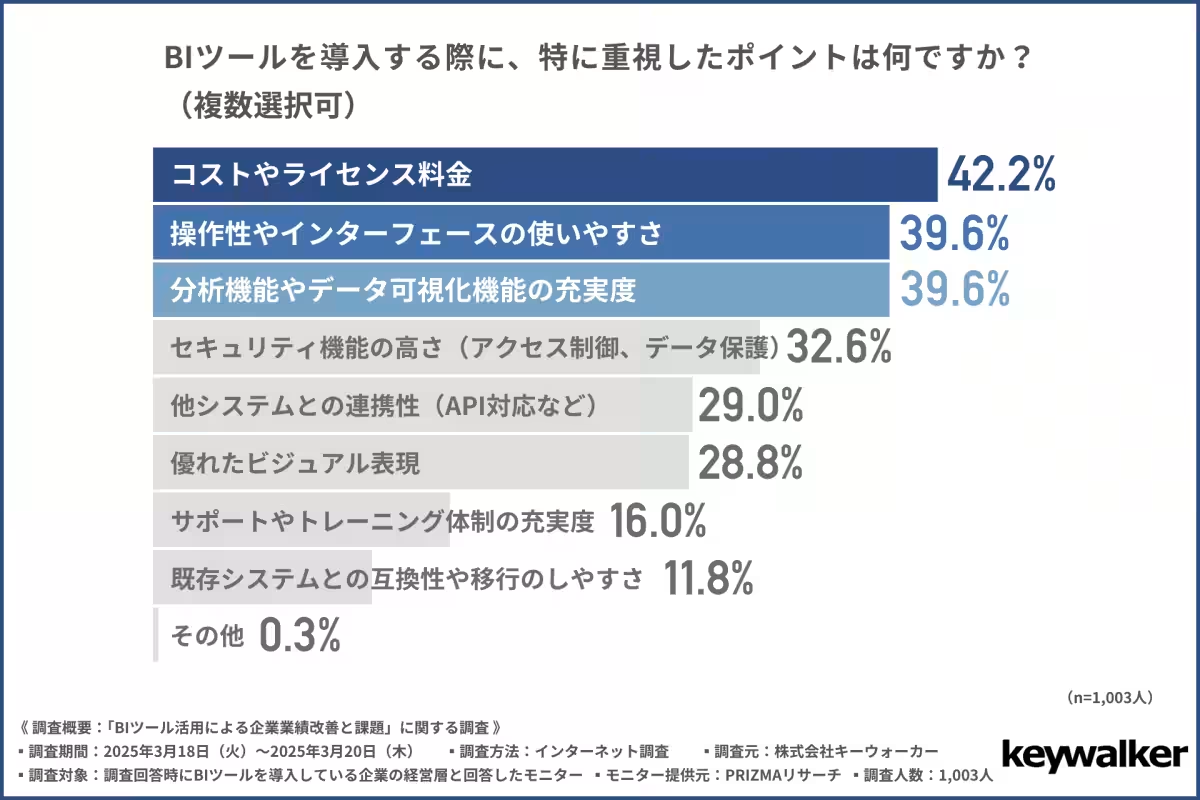
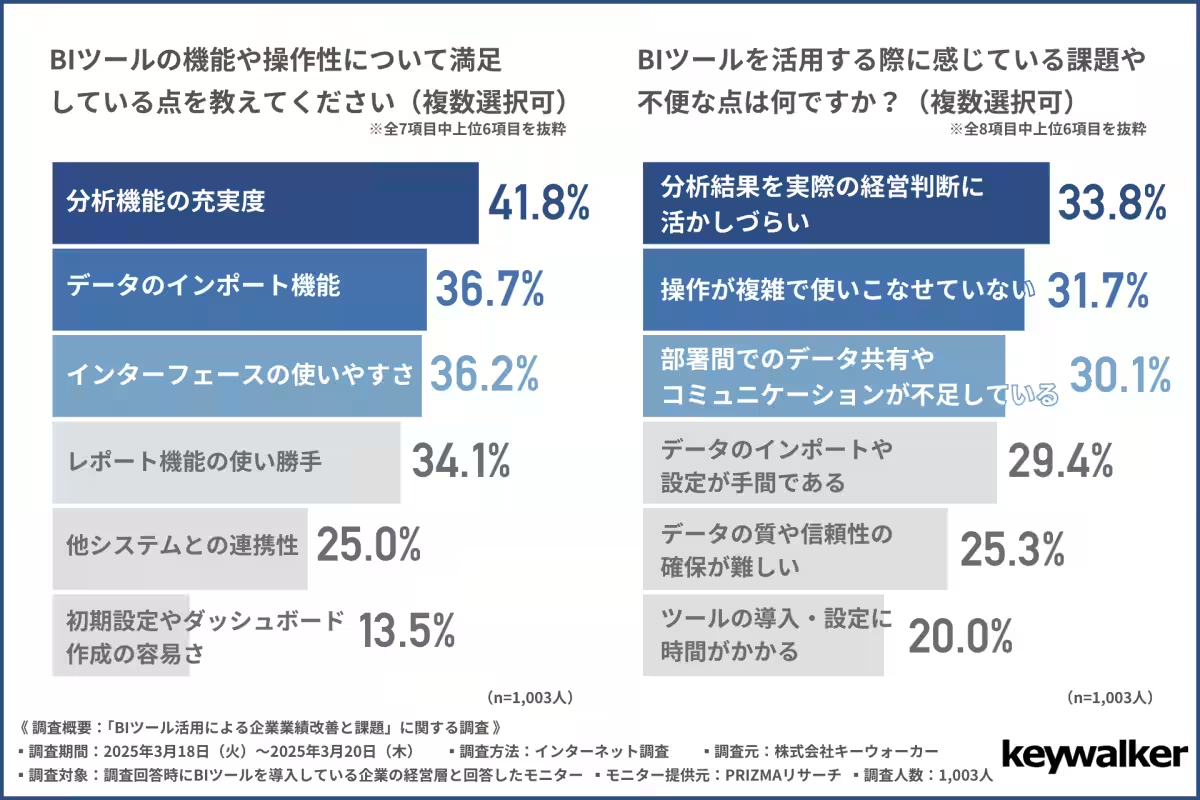
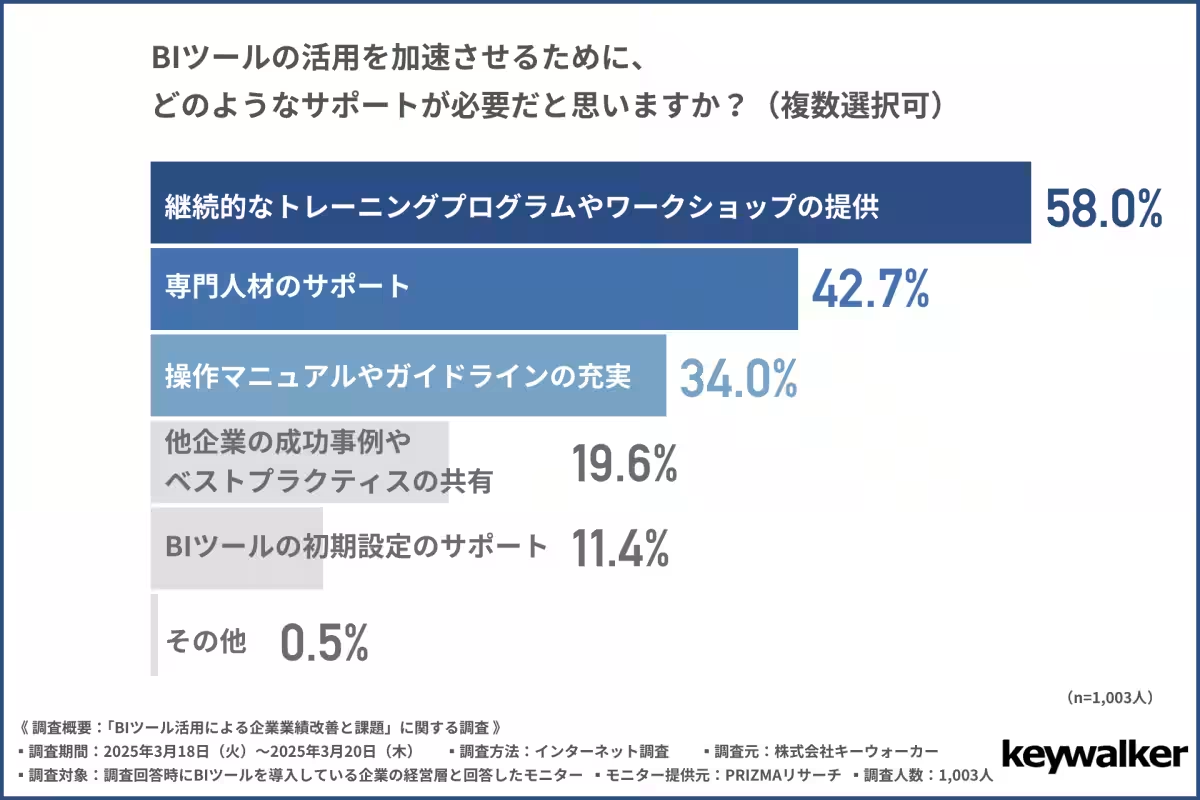
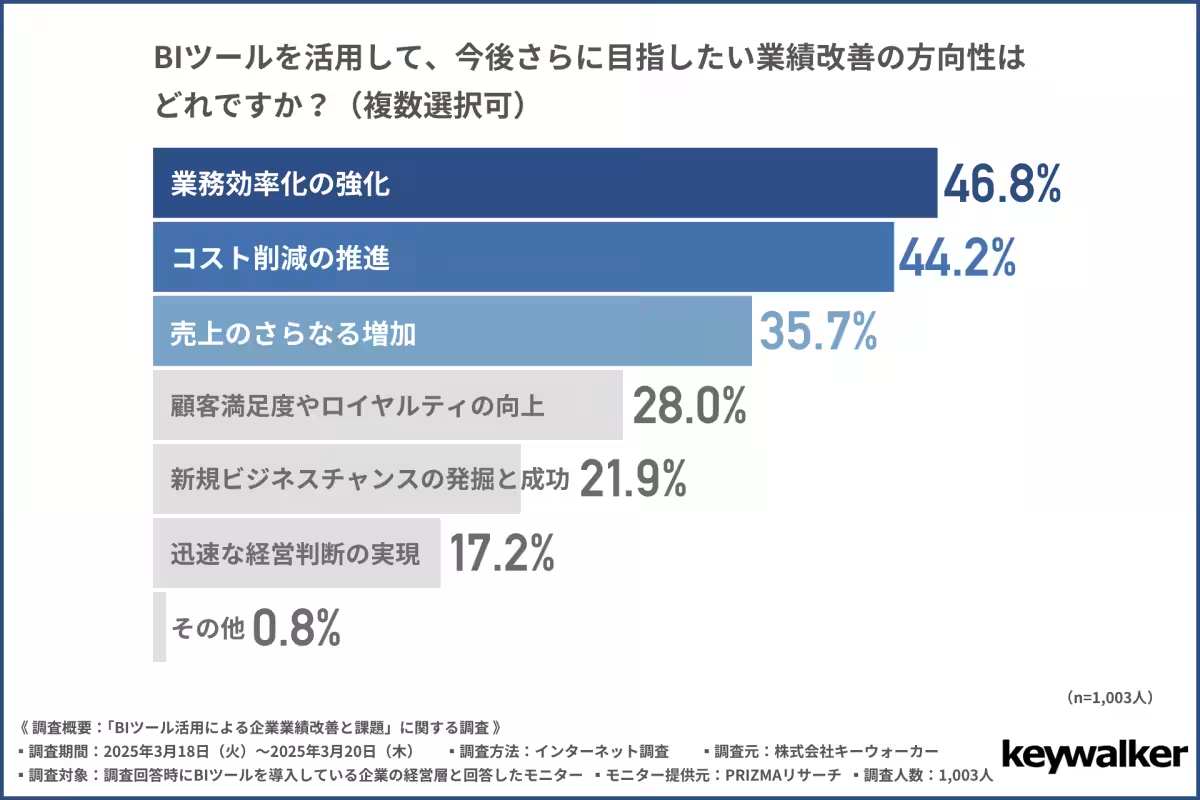

Topics Business Technology)










【About Using Articles】
You can freely use the title and article content by linking to the page where the article is posted.
※ Images cannot be used.
【About Links】
Links are free to use.